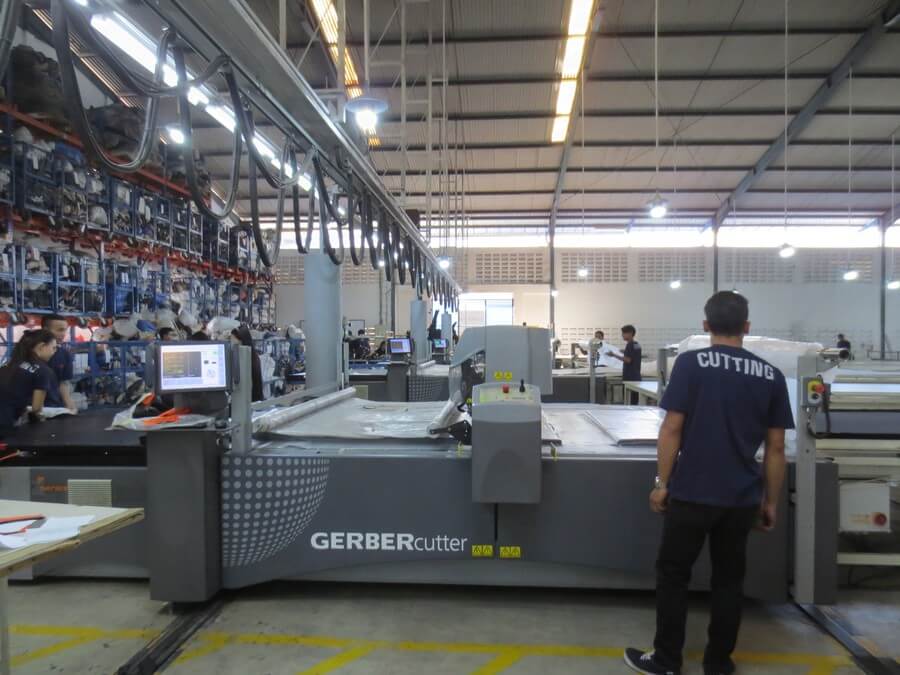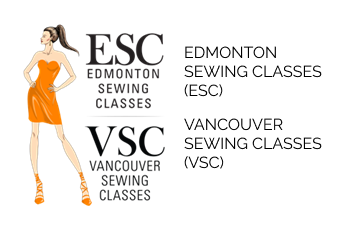
Gerber and Lectra are the CAD (computer-aided design) systems commonly used in the garment manufacturing sector for all mass production. They are computer systems that include the software, a plotter, a spreader and a laser cutter that helps a designer to create, design, plot, draft, manipulate, and grade pattern in any size and cut of fabrics. The system also allows you to store data and information for past, present and future use. The Gerber laser is good for cutting through numerous thick layers of fabric in production. The system is highly efficient but uses a lot of power in a mass production manufacturing setting. However, there is a big downside to the Gerber system – the computer software performs quite poorly on complex asymmetrical or bias-cut designs, especially where there are a lot of intricate curves or stretches, particularly in knit and bridalwear. Whenever and wherever there are a lot of variables in a design, the Gerber/CAD system will become less reliable and accurate.
Both the Gerber and Lectra systems are pricy and they generally require a large space in which to operate. The cost ranges from $100,000 to $1,500,000, depending on the model and the quantity cut. The system can cut between 10,000 and 60,000 garments per week. The Gerber system usually requires between 4,000 and 10,000 square feet of space to operate.
The Gerber system is a great system for medium to large garment manufacturers with anywhere from 200 to 15,000 employees. If your business has less than 50 employees, the Gerber system is not a cost-effective system to invest in. The entire CAD system is ideal for big volume production but it was never designed for the small independent designer. The reality is that no local independent designer could ever fully recover the cost of the system if she/he invested in one for their business.
The smaller companies that do not have a Gerber system quite often do everything manually in-house or they contract their work overseas to save cost and increase profit.
Generally speaking, if you are starting out in the business, outsourcing the work overseas may be your best option, since the labour cost for someone to operate the Gerber/CAD system in Asia would be only US $3 to $4 per day. So why would you need to learn to operate the Gerber system, or even invest in one in North America, when you can get someone to do the same work for a fraction of the cost? Labour costs in North America and Europe are just too high to compete with Asian workers.
Sadly, a lot of the fashion institutions these days tend to over promote and mislead their students with information that learning the Gerber system will help their graduates find good jobs. Let’s be realistic here, the Gerber system can cost as much or more than a Lamborghini car, which effectively means that no fashion design graduate will ever be able to afford or purchase one in their lifetime. Secondly, you need a huge premise to operate the system. Finally, operating the Gerber system overseas is a lot more cost effective than doing so in North America, which is why most companies in the US and Canada are outsourcing all of their Gerber work to countries like Bangladesh, Laos, Cambodia, Indonesia, India and Vietnam to save costs and increase profit margins.
Most companies in North America do not care whether you have the knowledge to operate the Gerber system and, at the end of the day, all they care about is their profit margin. Knowledge of the Gerber system is an asset to list on your resume, but not having it is definitely not an ice breaker for your career.
– Chris Falcon is a Canadian designer and fashion educator with over 35 years of experience in the garment design and manufacturing business.

